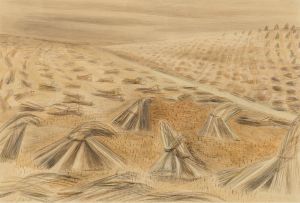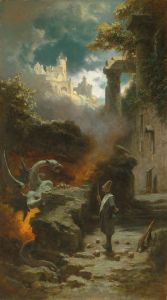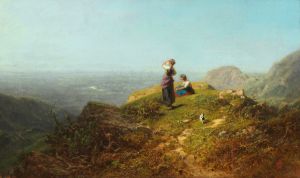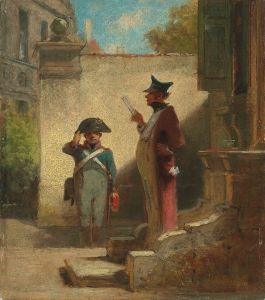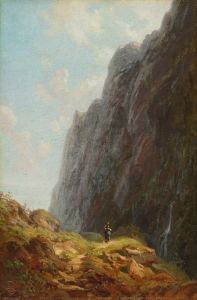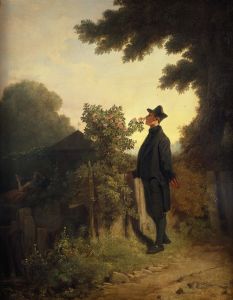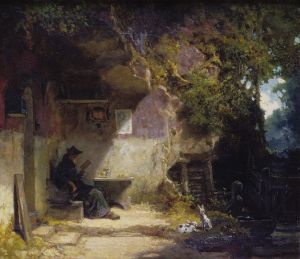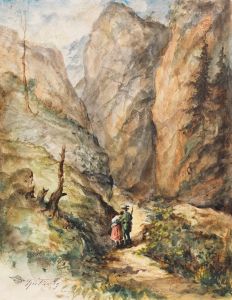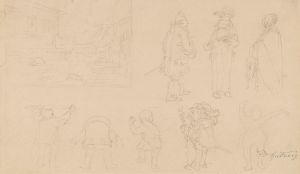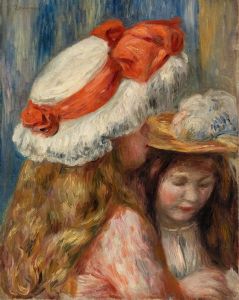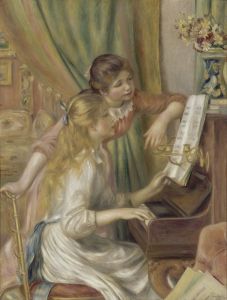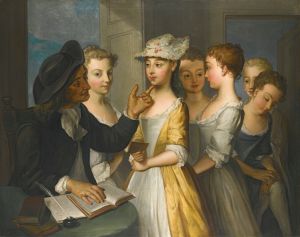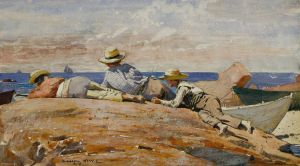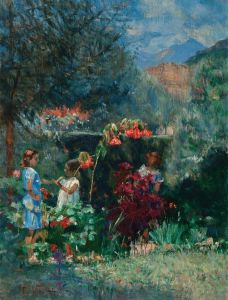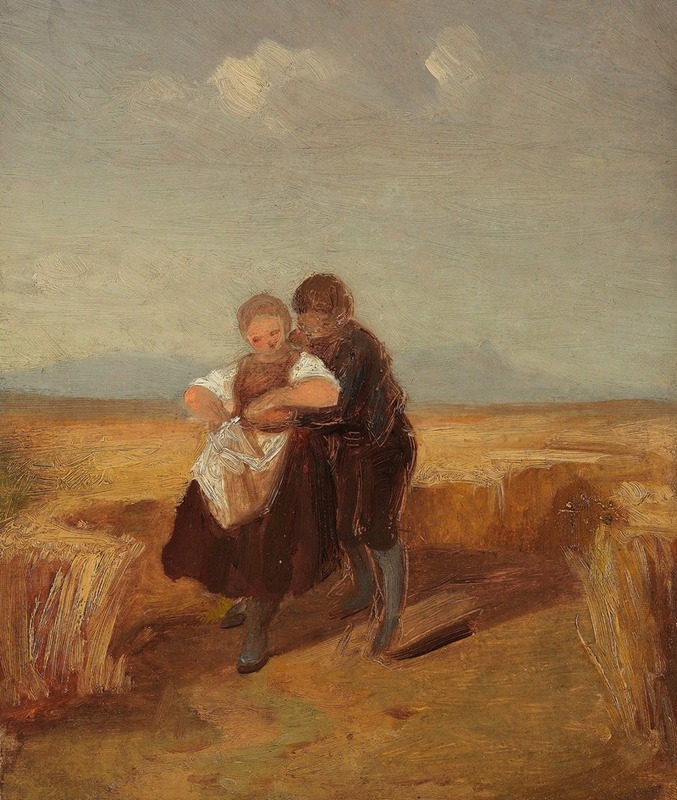
Bub und Mädchen im Kornfeld
A hand-painted replica of Carl Spitzweg’s masterpiece Bub und Mädchen im Kornfeld, meticulously crafted by professional artists to capture the true essence of the original. Each piece is created with museum-quality canvas and rare mineral pigments, carefully painted by experienced artists with delicate brushstrokes and rich, layered colors to perfectly recreate the texture of the original artwork. Unlike machine-printed reproductions, this hand-painted version brings the painting to life, infused with the artist’s emotions and skill in every stroke. Whether for personal collection or home decoration, it instantly elevates the artistic atmosphere of any space.
Carl Spitzweg's painting Bub und Mädchen im Kornfeld (translated as Boy and Girl in the Cornfield) is a work by the renowned 19th-century German Romantic painter and poet. Spitzweg is best known for his genre paintings that often depict idyllic, humorous, or sentimental scenes of everyday life, frequently set in rural or small-town environments. His works are characterized by their attention to detail, warm color palettes, and a sense of intimacy.
Unfortunately, there is limited specific information available about Bub und Mädchen im Kornfeld. The painting's exact creation date is not widely documented, nor is its current location or ownership. However, the title suggests that the artwork portrays a boy and a girl in a cornfield, a subject consistent with Spitzweg's frequent focus on pastoral and romanticized depictions of rural life. Such themes were common in Spitzweg's oeuvre, reflecting the Romantic era's fascination with nature, simplicity, and human connection.
Spitzweg's artistic style often combined elements of Biedermeier sensibilities with Romanticism. His works typically evoke a sense of nostalgia and tranquility, capturing moments of quiet beauty or gentle humor. If Bub und Mädchen im Kornfeld follows this tradition, it likely features a serene and picturesque rural setting, with the figures of the boy and girl integrated harmoniously into the natural environment.
Carl Spitzweg (1808–1885) was largely self-taught as an artist. He initially trained and worked as a pharmacist before dedicating himself to painting. His works gained recognition during his lifetime and remain celebrated for their charm and technical skill. Spitzweg's paintings often reflect a deep appreciation for the simple joys of life, as well as a keen observation of human behavior and interaction.
Due to the lack of detailed records or scholarly analysis specifically addressing Bub und Mädchen im Kornfeld, further insights into the painting's composition, context, or significance remain speculative. As with many of Spitzweg's works, it is possible that the painting was created as a standalone piece rather than as part of a series or larger thematic project.
No additional verifiable information about Bub und Mädchen im Kornfeld is currently available.





